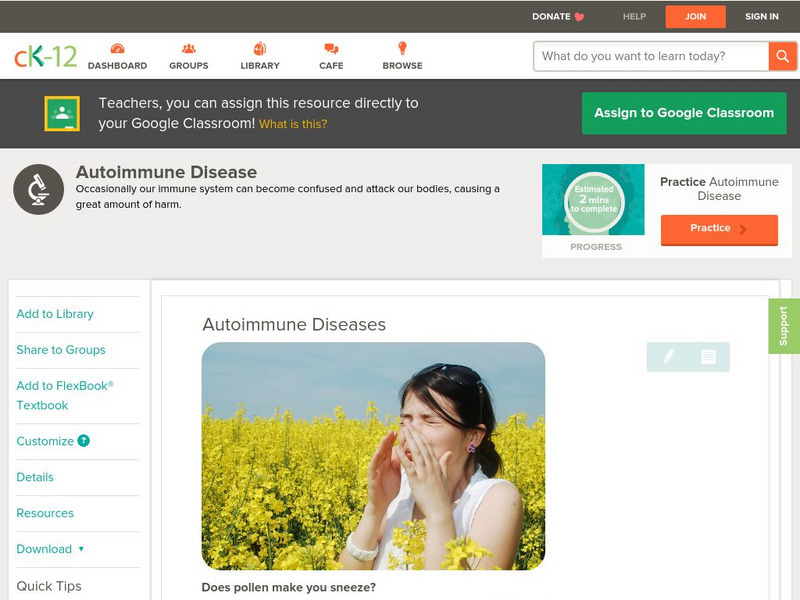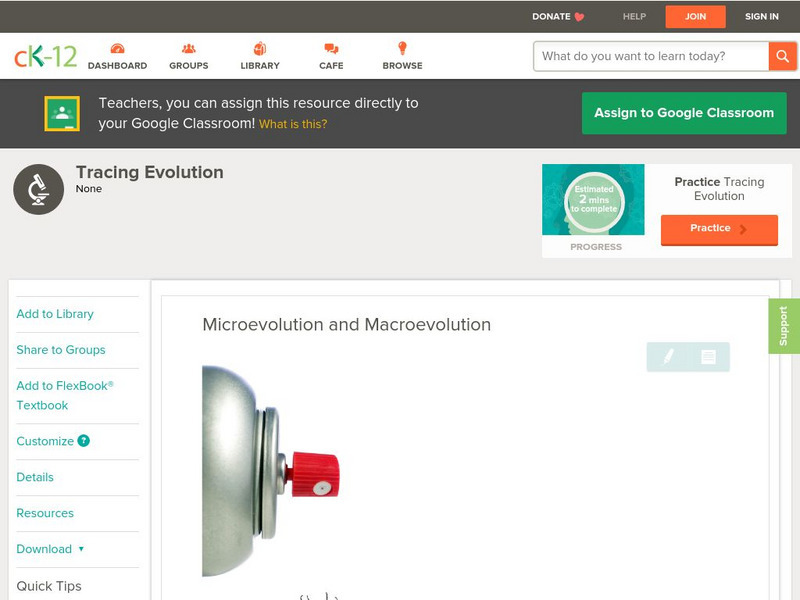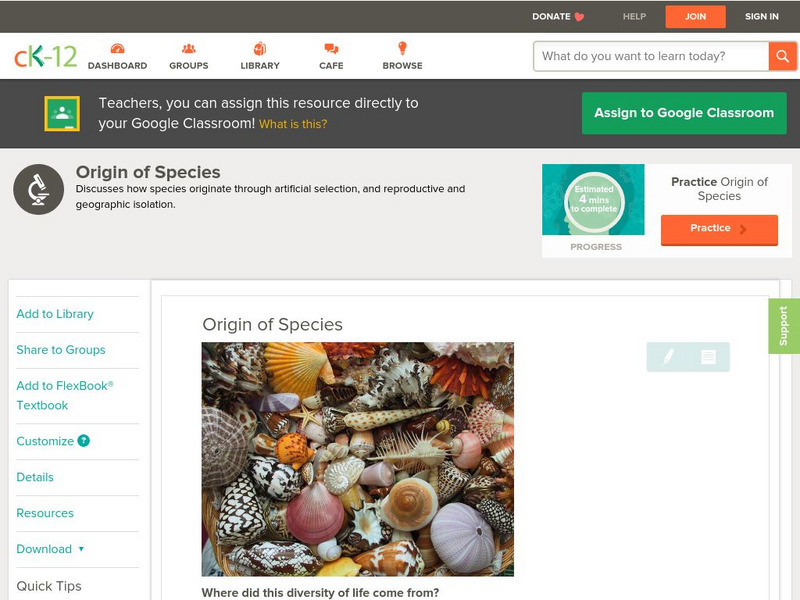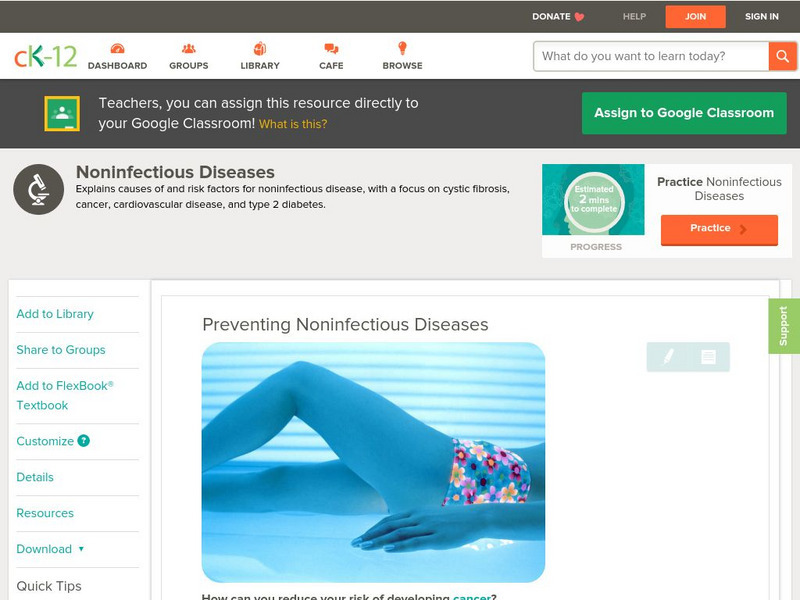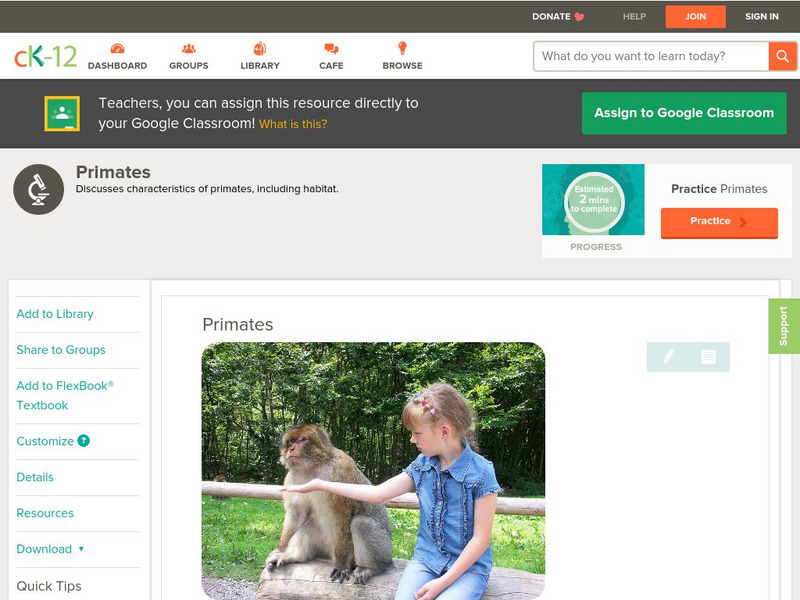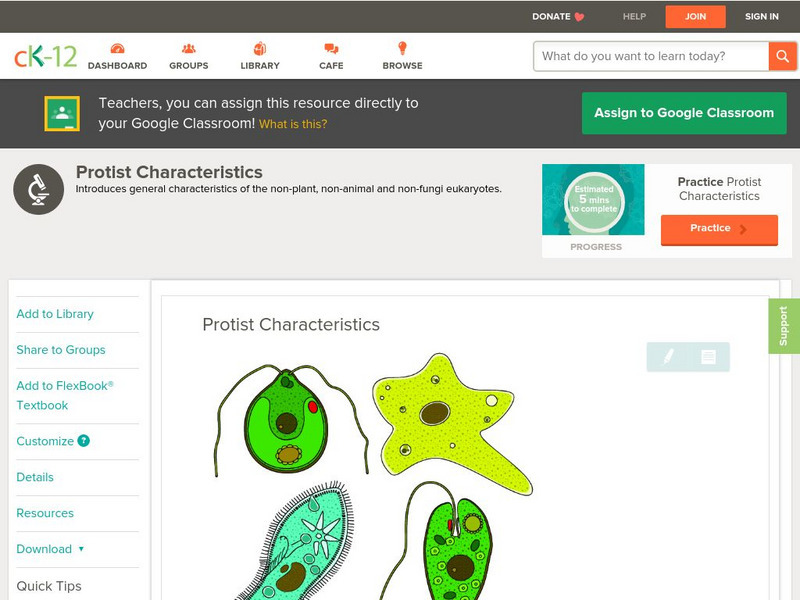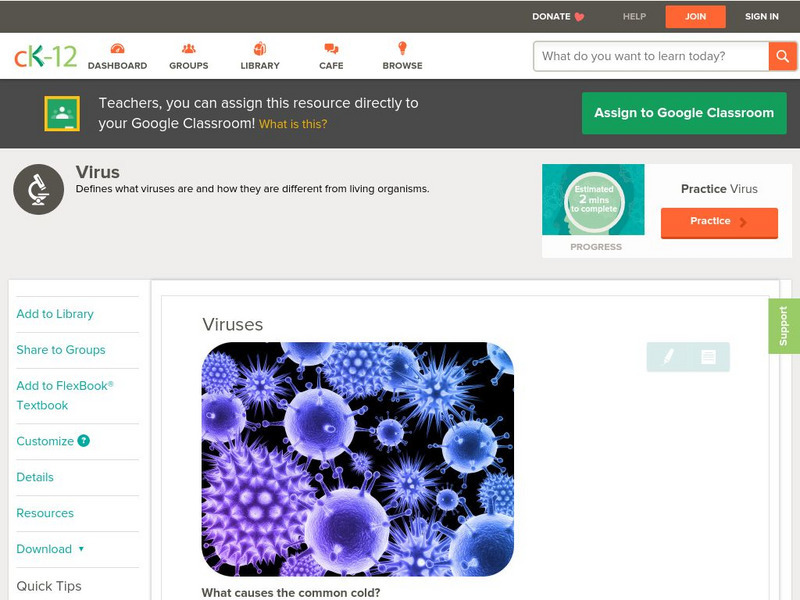Hi, what do you want to do?
CK-12 Foundation
Ck 12: Life Science: Autoimmune Diseases
[Free Registration/Login may be required to access all resource tools.] The immune system usually protects you from pathogens and other causes of disease. When the immune system is working properly, it keeps you from getting sick. But...
CK-12 Foundation
Ck 12: Life Science: Bacteria in the Digestive System
[Free Registration/Login may be required to access all resource tools.] Yogurt is a good source of calcium. Yogurt also contains active cultures of "good" bacteria. Foods that contain these beneficial bacteria are sometimes called...
CK-12 Foundation
Ck 12: Life Science: Bacteria Reproduction
[Free Registration/Login may be required to access all resource tools.] Bacteria, being single-celled prokaryotic organisms, do not have a male or female version. Bacteria reproduce asexually. In asexual reproduction, the "parent"...
CK-12 Foundation
Ck 12: Life Science: B and T Cell Response
[Free Registration/Login may be required to access all resource tools.] Some defenses, like your skin and mucous membranes, are not designed to ward off a specific pathogen. They are just general defenders against disease. Your body also...
CK-12 Foundation
Ck 12: Life Science: Biotechnology in Agriculture
[Free Registration/Login may be required to access all resource tools.] The majority of the corn in the United States is genetically engineered. Corn syrup is used to sweeten many things, like Coke. Corn is also fed to the cows. Learn...
CK-12 Foundation
Ck 12: Life Science: Cartilaginous Fish
[Free Registration/Login may be required to access all resource tools.] Cartilaginous fish range in size from the dwarf lanternshark, at 6.3 inches, to the 50-foot whale shark. These fish have a jaw and evolved from the jawless fish....
CK-12 Foundation
Ck 12: Life Science: Light Reactions of Photosynthesis
[Free Registration/Login may be required to access all resource tools.] Although we generally discuss plants when learning about photosynthesis, keep in mind that plants are not the only organisms that can make their own food. Some...
CK-12 Foundation
Ck 12: Life Science: Meiosis
[Free Registration/Login may be required to access all resource tools.] Sexual reproduction combines gametes from two parents. Gametes are produced by a special type of cell division known as meiosis. Meiosis contains two rounds of cell...
CK-12 Foundation
Ck 12: Life Science: Microevolution and Macroevolution
[Free Registration/Login may be required to access all resource tools.] Does evolution only happen gradually through small changes? Or is it possible that drastic environmental changes can cause new species to evolve? Or can both small...
CK-12 Foundation
Ck 12: Life Science: Nonvascular Plants
[Free Registration/Login may be required to access all resource tools.] Nonvascular seedless plants lack vascular tissue and they do not have true roots, stems, or leaves, but they can have stem-like and root-like structures. These...
CK-12 Foundation
Ck 12: Life Science: Organization of the Human Body
[Free Registration/Login may be required to access all resource tools.] Cells, like these nerve cells, do not work in isolation. To send orders from your brain to your legs, for example, signals pass through many nerve cells. These cells...
CK-12 Foundation
Ck 12: Life Science: Origin of Species
[Free Registration/Login may be required to access all resource tools.] The creation of a new species is called speciation. Most new species develop naturally. But humans have also artificially created new breeds and species for...
CK-12 Foundation
Ck 12: Life Science: Plant Like Protists
[Free Registration/Login may be required to access all resource tools.] Plant-like protists are known as algae. They are a large and diverse group. Plant-like protists are autotrophs. This means that they produce their own food. They...
CK-12 Foundation
Ck 12: Life Science: Pregnancy and Childbirth
[Free Registration/Login may be required to access all resource tools.] While a woman is pregnant, the developing baby may be called an embryo or a fetus. The embryo stage lasts until the end of the 8th week after fertilization. After...
CK-12 Foundation
Ck 12: Life Science: Preventing Noninfectious Diseases
[Free Registration/Login may be required to access all resource tools.] Most allergies can be prevented by avoiding the substances that cause them. For example, you can avoid pollens by staying indoors as much as possible. You can learn...
CK-12 Foundation
Ck 12: Life Science: Primates
[Free Registration/Login may be required to access all resource tools.] If primates are mammals, what makes them seem so different from most mammals? Primates, including humans, have several unique features. Some adaptations give...
CK-12 Foundation
Ck 12: Life Science: Protist Characteristics
[Free Registration/Login may be required to access all resource tools.] Protists are eukaryotes, which means their cells have a nucleus and other membrane-bound organelles. Most protists are single-celled. Other than these features, they...
CK-12 Foundation
Ck 12: Life Science: Protists Nutrition
[Free Registration/Login may be required to access all resource tools.] The cells of protists need to perform all of the functions that other cells do, such as grow and reproduce, maintain homeostasis, and obtain energy. They also need...
CK-12 Foundation
Ck 12: Life Science: Reptiles
[Free Registration/Login may be required to access all resource tools.] What reptiles can you name? Snakes, alligators, and crocodiles are all reptiles. Modern reptiles live on every continent except Antarctica. They range in size from...
CK-12 Foundation
Ck 12: Life Science: Seasonal Changes in Plants
[Free Registration/Login may be required to access all resource tools.] Have you seen the leaves of plants change colors? During what time of year does this happen? What causes it to happen? Plants can sense changes in the seasons....
CK-12 Foundation
Ck 12: Life Science: Symbiotic Relationships of Fungi
[Free Registration/Login may be required to access all resource tools.] Fungi don't live in isolation. They often interact with other species. In fact, fungi can be dependent on another organism for survival. When two species live close...
CK-12 Foundation
Ck 12: Life Science: Types of Nutrients
[Free Registration/Login may be required to access all resource tools.] Carbohydrates, proteins, and lipids contain energy. When your body digests food, it breaks down the molecules of these nutrients. This releases the energy so your...
CK-12 Foundation
Ck 12: Life Science: Vascular Seedless Plants
[Free Registration/Login may be required to access all resource tools.] Vascular seedless plants have vascular tissue but do not have seeds. Most of the large vascular seedless plants from ancient times are now extinct, but their smaller...
CK-12 Foundation
Ck 12: Life Science: Viruses
[Free Registration/Login may be required to access all resource tools.] We have all heard of viruses. The flu, the common cold, and many other diseases are caused by viruses. But what is a virus? Do you think viruses are living? Which...





